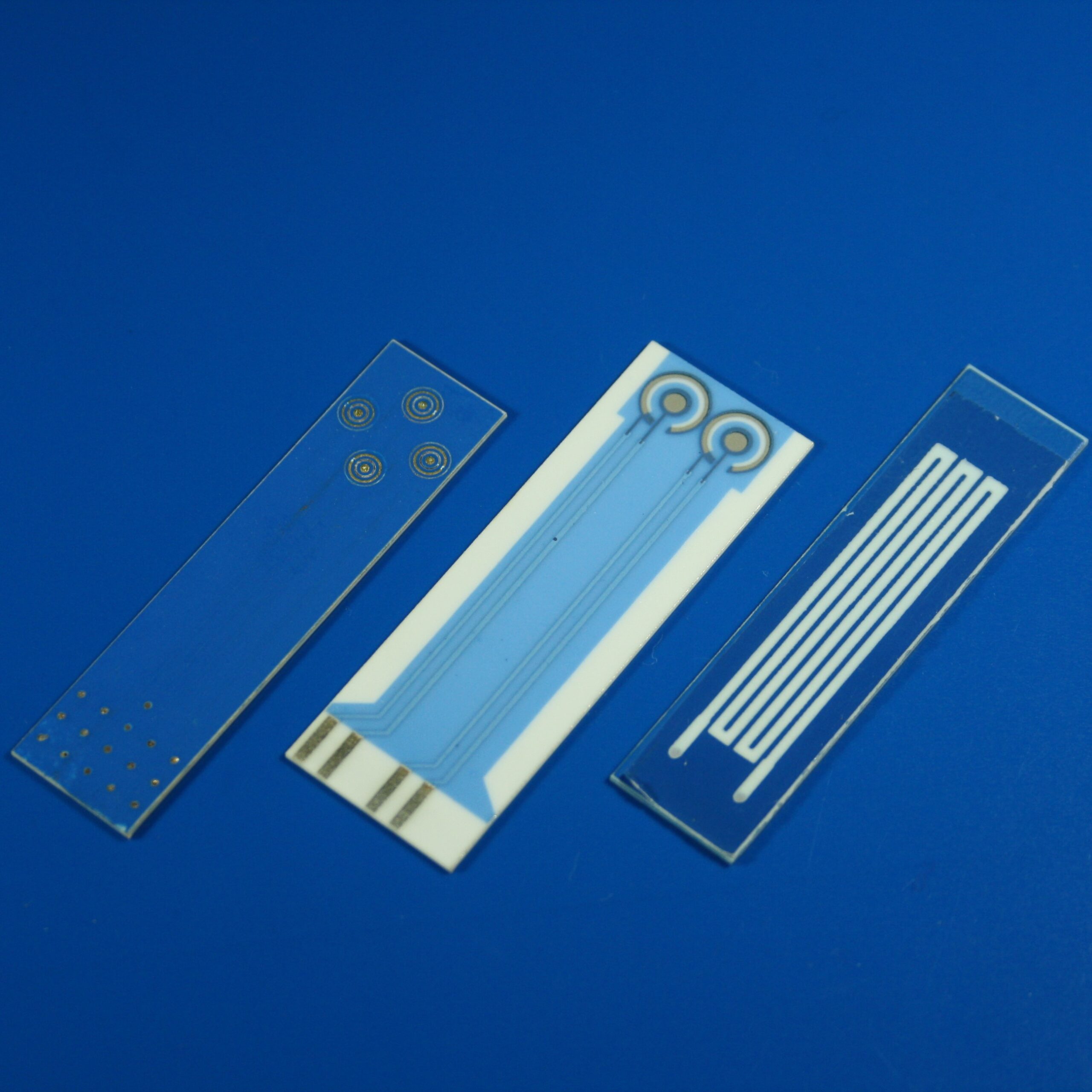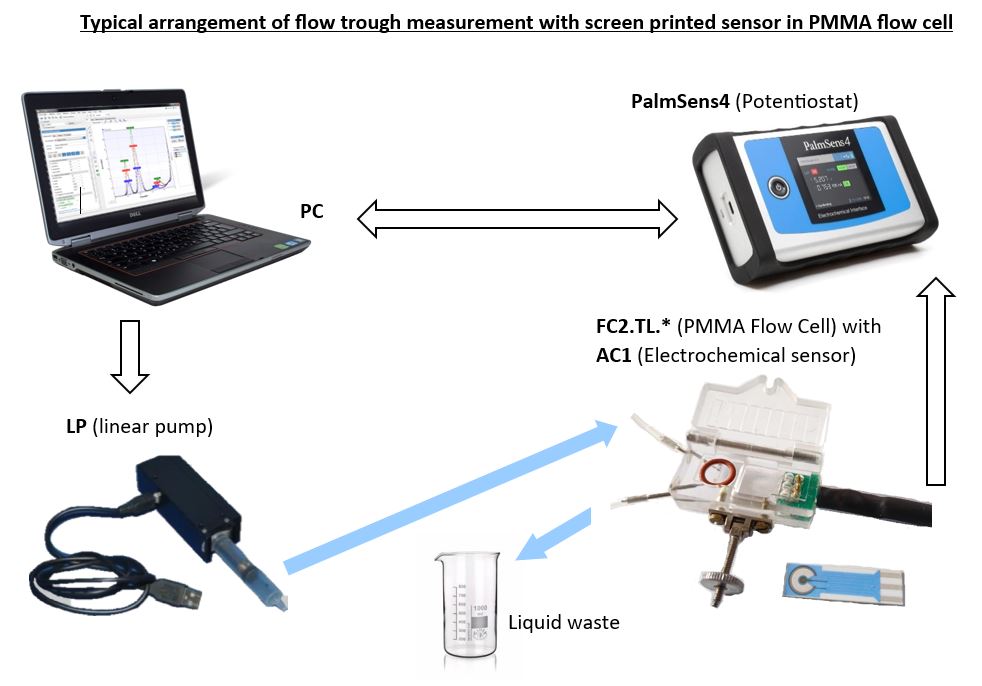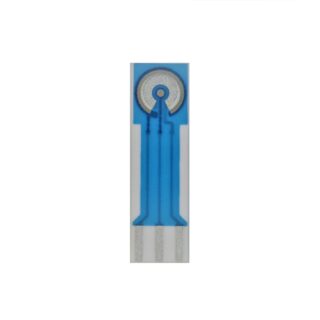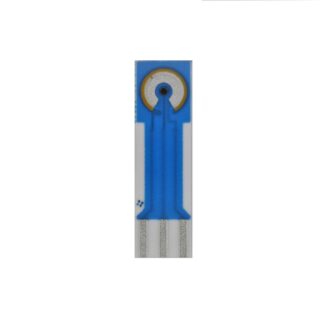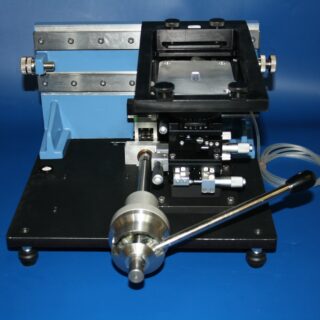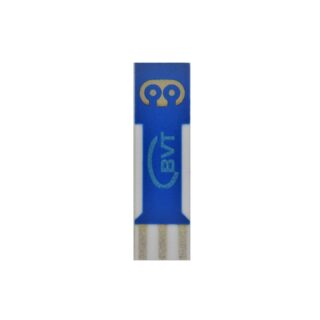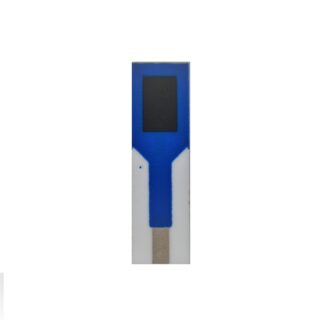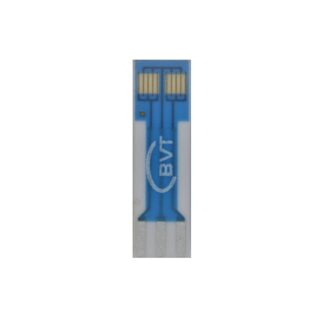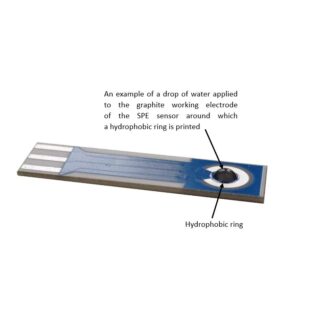Category
- Custom made glass products
- CUSTOMER SERVICES
- NEW PRODUCTS
- Sensors and electrodes
- Custom made and Modified Screen Printed Electrodes
- Stirrers
- Cables and connectors
- Cell
- Potentiostats
- Manual Screen Printer
- Minithermostat
- Pumps
- Accessories
- Kits & Sets
- Discounted SPEs (at a reduced price with visual defects/inconsistancies, but fully functional)
Custom and Modified Screen Printed Electrodes (SPE)
We offer our customers Modified and Custom Screen Printed Sensors based on their demands and needs, we will also recommend to the customer if there is a better option for their intended purposes.
Examples of possible Modified SPE Surfaces
Graphine, Streptavidin, Polyaniline and High-purity Materials.
High-purity material on WE
We can provide polished working electrode or insert a high-purity material on WE (99.9% or better).
The WE can be applied also by sputtering.
Materials of WE
We can offer you not only standard materials as Au/Pt, Au, Pt, Ag, C (carbon) but also glassy carbon, Ni, Cu, and other materials.
Special Active Surfaces
We can provide SPEs with Special Active Surfaces using Copper (Cu), Nickle (Ni), Magnesium (Mg), Bismuth (Bi) and Zirconium (Zr).
Sensor/device size
The Technological capabilities and our experience and knowledge enable us to produce devices from as small as 3 x 6 mm, up to as large as 150 x 1200 mm.
You may also like…
-
AC1.AChE Electrochemical sensor
Read moreAmperometric Acetylcholinesterase three-electrode sensor with patented structure made by thick film technology
Dimensions: 25.4 x 7.26 x 0.63 mm
WE material: Pt
Sensor Usage: Measurement of AChE inhibitor concentration – especially organophosphorous and carbamate pesticides (paraoxon, malaoxon), toxic and neurotoxic gases (sarin, soman, tabun, VX).
Acetylcholinesterase from electric eel type VI-S is immobilized on the active surface of a working electrode of electrochemical sensor AC1.W2.RS (i.e. Platinum working electrode, silver reference electrode). The diameter of the immobilized bioactive membrane is 2 mm and the mean applied activity is 1 unit/mm2.
* For this product, we recommend our customers use the Training Service from BVT.
(https://bvt.cz/produkt/offer-of-long-term-automated-measurements-on-bvt-apparatus/)
-
AC1P Electrochemical sensor
Read moreAmperometric three-electrode sensor with patented structure type AC1 with polished working electrode made by thick film technology.
Dimensions: 25.4 x 7.26 x 0.63 mm
WE material: Au
The sensor is formed on a corundum ceramic base. On to this surface the working, the reference and the auxiliary electrodes are applied. Working electrode has homogenous surface with roughness less than 1 µm. The working and the auxiliary electrodes are made of variety of materials. At the end of the sensor there is a contacting field which is connected with the active part by the silver conducting paths which are covered by a dielectric protection layer. A bio-chemically active substance can be immobilised on the working electrode of the sensor to create a biosensor.
-
AC1.GOD Electrochemical sensor
Read moreAmperometric Glucose Oxidase three-electrode sensor with patented structure made by thick film technology
Dimensions: 25.4 x 7.26 x 0.63 mm
WE material: Pt
Sensor Usage: Amperometric measurement of β-D-Glucose concentration in liquid samples (from 0 °C to 45 °C)
Glucose Oxidase (GOD) from Aspergillus Niger is immobilized on the active surface of a working electrode of amperometric substrate AC1.W2.RS.
The diameter of the immobilized bioactive membrane is 2 mm and the mean applied activity is 1 unit/mm2.
* For this product, we recommend our customers use the Training Service from BVT.
(https://bvt.cz/produkt/offer-of-long-term-automated-measurements-on-bvt-apparatus/)
-
MSP Manual Screen Printer
Read moreThe manual screen printer is useful for applying of biochemical paste on electrochemical sensors. It may be used for preparing customer design electrochemical sensors also.
It uses extremely small quantities of printing material. With the adjustment of the distance between the screen and the substrate the thickness of the printed elements can be varied. Under optimal conditions printing of lines with 200 µm can be achieved.
* For this product, we recommend our customers use the Training Service from BVT.
(https://bvt.cz/produkt/offer-of-long-term-automated-measurements-on-bvt-apparatus/)
Related products
-
AC2 Electrochemical sensor
Read moreAmperometric two-electrode sensor with two working electrodes made by thick film technology.
Dimensions: 25.4 x 7.26 x 0.63 mm
WE material: Au/Pt, Au, Pt, Ag, C
The sensor is formed on a corundum ceramic base. On to this surface two working electrodes, and one reference electrode are applied. The working and the reference electrodes can be made of variety of materials. At the end of the sensor there is a contacting field which is connected with the active part by the silver conducting paths which are covered by a dielectric protection layer. Different bio-chemically active substance can be immobilised on the working electrode to create a biosensor.
-
AC4 Electrochemical sensor
Read moreAmperometric single working electrode sensor with a extremely big working electrode made by thick film technology
Dimensions: 25.4 x 7.26 x 0.63 mm
WE material: Au/Pt, Au, Pt, Ag, C
The sensor is formed on a corundum ceramic base. On to this surface working electrode is applied. The working electrode is made of variety of materials. At the end of the sensor there is a contact which is connected with the active part by the silver conducting path which is covered by a dielectric protection layer.
-
CC2 Electrochemical sensor
Read moreA conductivity sensor with two active parts made by thick film technology with interdigitated structure of electrodes
Dimensions: 25.4 x 7.26 x 0.63 mm
WE material: Au/Pt, Au, Pt, Ag, C
The sensor is formed on a corundum ceramic base. Onto this surface two interdigitated structures of electrodes are applied. The electrodes are made of Platinum-Gold alloy in standard product CC2.WS. At the end of the sensor there is a contact which is connected with the active part by the silver conducting path which is covered by a dielectric protection layer. A bio-chemically active substance can be put on the electrodes, one interdigitated structure, the second structure is reference.
-
AC1. electrochemical sensor with a hydrophobic ring
Read moreElectrochemical sensor type AC1. with a hydrophobic ring – a hydrophobic layer is printed around the working electrode of the sensor (with a diameter of 1 or 2 mm), which ensures that the liquid applied to the working electrode of the sensor forms a drop and does not move outside to the reference and auxiliary electrodes (see the photograph below).
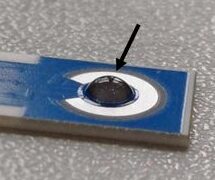
Such modification of the sensor is suitable, for example, before the next intended modification of only the working electrode of the sensor by the customer – for example, immobilization of a bioactive substance.

